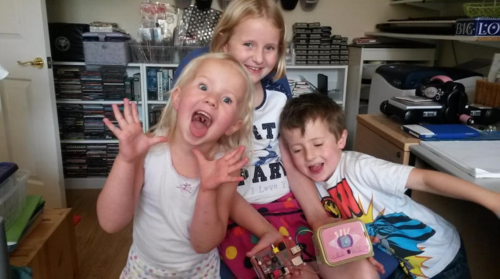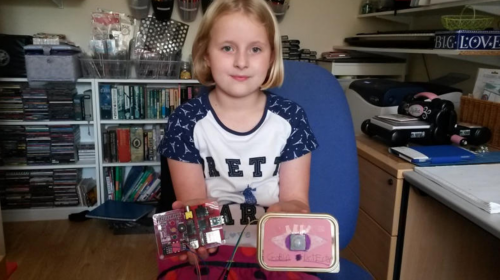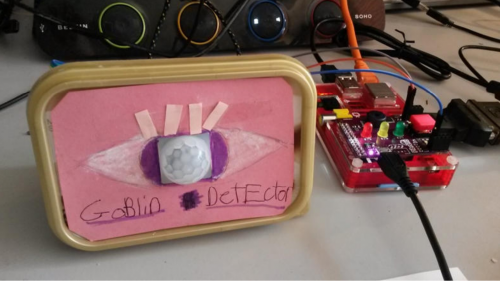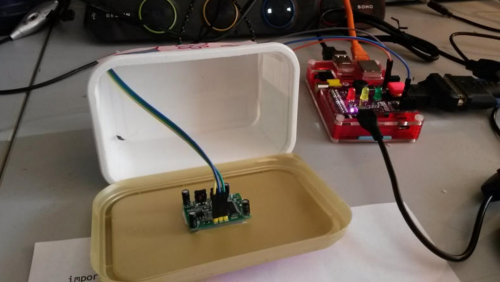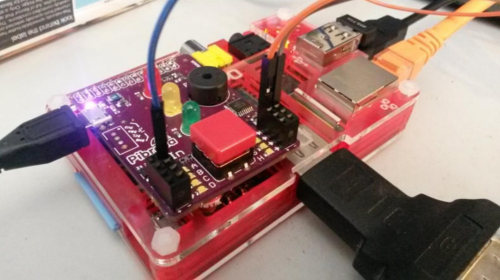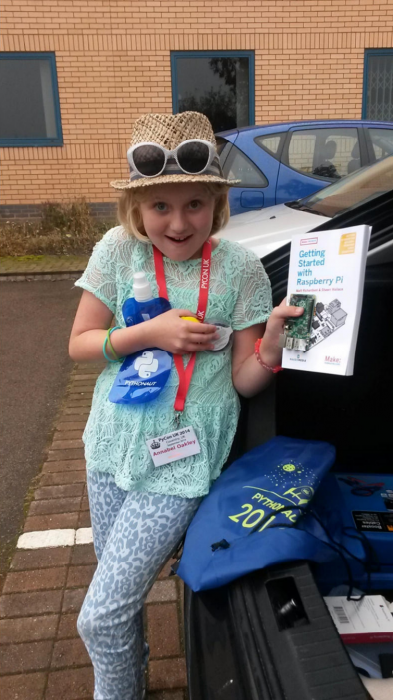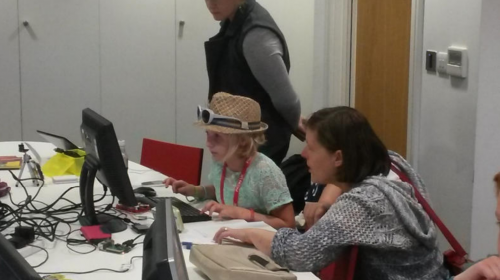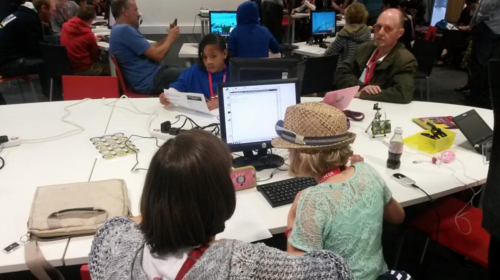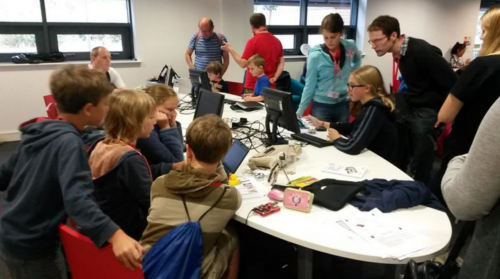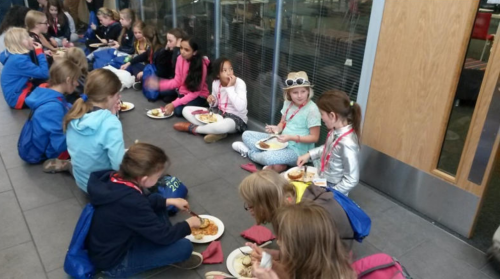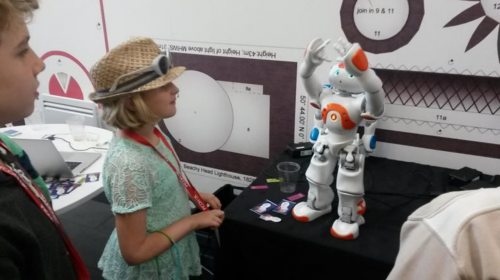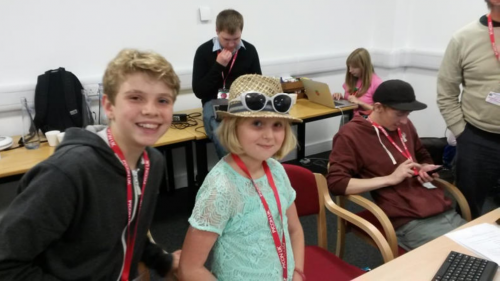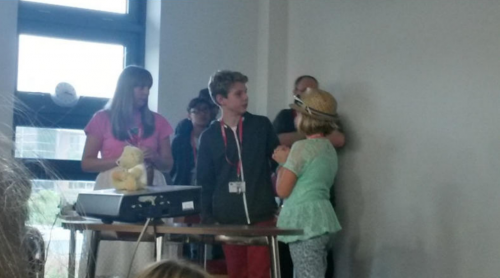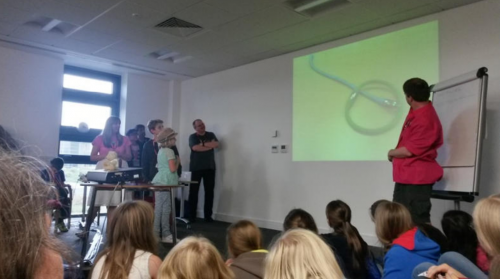|
Usually when Google takes aim, the target is Apple –this time, Amazon is more clearly locked in their sights. Google’s Brian Elliott, Head of Partnerships at Google Shopping, announced this week that they would be rebranding their services as Google Express and expanding to three new cities: Chicago, Boston, and Washington, D.C (not to mention the fact that they added 16 new participating merchants to their roster with familiar names like: Barnes & Noble, PetSmart, Vitamin Shoppe and Sports Authority). Much like Amazon Prime’s Same Day delivery service, Google Express intends to bridge the gap between shopping at your favourite local stores and the convenience of being able to do that online. To this end, I’m certain it isn’t a coincidence that Google has undercut Amazon’s $99 annual membership fee by charging $95 for their equivalent (after three free months during which you can give it a try). You can of course pay by the order as well, but it adds up quickly with a $5-$8 surcharge applied to each. So what privileges does this membership provide? It’s all about same-day delivery… at least as long as you are one of the lucky 7-million people who happen to live in the right city and want products from the right stores. Truth is that things are rather limited right now, but it’s a good start. Analysts are busy trying to figure how less retail foot traffic affects businesses, with many suggesting that it won’t eliminate the need for employees, but rather change the type of work that needs doing (picking and packing orders instead of dealing directly with customers). For those of us already delighted by online shopping, Google (and others) embracing rapid shipping practices demonstrates positive forward momentum. It also means that one day, sooner than later, I may not have to leave the house to brave huge retail outlets (and their parking lots) for boring things like toilet paper and laundry soap. Google Targets Amazon with Rebranded Shopping Express is a post from: Good e-Reader |
A Semi-automated Technology Roundup Provided by Linebaugh Public Library IT Staff | techblog.linebaugh.org
Tuesday, October 14, 2014
Google Targets Amazon with Rebranded Shopping Express
Everything You Deed to Know about the Lack of eBook Security in Adobe Digital Editions
|
Adobe Digital Editions is used by millions of libraries and readers to transfer eBooks to their devices. This can include e-readers, tablets or smartphones. Whenever you add an eBook to the ADE library, information is transferred to the Adobe servers in plain text. The data comprises of your User ID, Device ID, IP address, how long it took you to complete the book and percentage of the book read. Anyone with the correct tools can monitor your reading habits and it doesn’t take much for all of your private information to fall into the wrong hands. It is important to note what exactly is transpiring when eBook information is sent to Adobe. Many media outlets are incorrectly reporting that all EPUB and PDF books on your computer are being scanned and sent to Adobe. The only books that are affected are the ones you import into Digital Editions for the purposes of sending to your e-reader, smartphone or tablet. Libraries stand the most to lose from the Adobe Digital Editions firestorm. Chiefly because unless you use a dedicated app from 3M, Overdrive, or Baker & Taylor on your device, you will end up using it to transfer content to your Kindle, Kobo, or Nook. This is a critical piece of software needed to transfer a book borrowed from the library to their device. The Amazon Kindle is a bit of a different beast than all other e-readers. infoDOCKET's Gary Price noted that whenever a user checks out a library ebook on a Kindle device, Amazon gets access to their reading data as well (per the Kindle terms of use). He added that "the dedication and vigilance to user privacy that the public (both library users and non-users) appreciate from libraries is not the same in the digital world (for many reasons) and we need to do more." "Sending this information in plain text undermines decades of efforts by libraries and bookstores to protect the privacy of their patrons and customers," Electronic Frontier Foundation Corynne McSherry wrote in a blog post about the issue. An Adobe spokesperson provided the following statement: “Adobe Digital Editions allows users to view and manage eBooks and other digital publications across their preferred reading devices—whether they purchase or borrow them. All information collected from the user is collected solely for purposes such as license validation and to facilitate the implementation of different licensing models by publishers.” Some of these models could include eBook subscription services that pay the author after a certain number of pages are read. Adobe has announced that they are issuing a patch for the latest version of Adobe Digital Editions. The company noted that “In terms of the transmission of the data collected, Adobe is in the process of working on an update to address this issue.” It is unclear on what they mean, but likely they will try and improve eBook security so that the transmitted data is not in plain text. Everything You Deed to Know about the Lack of eBook Security in Adobe Digital Editions is a post from: Good e-Reader |
Skype Launches Video Chat App Qik
|
Skype is doing their best to remain relevant in the ever-evolving world of instant messaging apps. With the release of Qik (pronounced ‘Quick’), Skype is a video messaging app designed to run along side their signature title. Behaving quite like an answering machine, Qik lets you send pre-recorded videos to your contacts (whether they are online at the same time as you or not). Dan Chastney, Principal Program Manager Lead at Skype, describes their vision for Qik and the future of Skype:
Videos can be up to 42 seconds long (which is either completely arbitrary, or a nod to the Hitchhiker’s Guide to the Galaxy –behaving as the answer to life, the universe, and everything), and are sent immediately after they are recorded (unless you choose to use pre-recorded Qik-Fliks, used for stock responses like shaking the naughty finger at somebody or shrugging your shoulders and looking bewildered). Your videos will also be an unexpected square-shape, making them more like the familiar Instagram format instead of the rectangular shape we are used to seeing come from our smartphones. Functioning much like traditional MMS messages, content is pushed out to your contacts as you create it –meaning your videos are not stored on any centralized servers. A little less traditionally, if you delete the message (or wait out the 2-week expiry period), it is completely gone… even more oddly, if the sender deletes the message after it has been sent, it is deleted from the recipients device as well. A very handy feature I suppose, for those who may suffer from videographer’s remorse. If somebody tries to send you a Qik video and you do not have the app installed, you will get a message indicating what you must do to remedy the situation. My test drive of Qik wasn’t terribly successful, with the app freezing frequently and videos not being recorded correctly, so it appears that Skype may still have a few bugs to work out before they are truly ready for prime time; with any luck, things work better from your device. If you would like to give it a try for yourself, download Skype Qik: Group Video Chat for free now. Skype Launches Video Chat App Qik is a post from: Good e-Reader |
URL: http://goodereader.com/blog/spotlight-on-android/skype-launches-video-chat-app-qik
Apple Pay Training Programs Help Retailers Prepare for Launch
|
We heard tales of the Apple Pay mobile payment solution during the company’s big launch event last month, but we weren’t sure exactly when we could expect to give the new service a try. There still hasn’t been anything official announced, but the start of Apple Pay training for their retail store personnel suggests it could be sometime later this month (along with an iOS 8.1 software update which will be required to configure the service). The training materials offer specifics regarding the setup and transaction processes for Apple Pay, including a new Settings tab that will let users manage each of the credit or debit cards they intend to include (adding a maximum of 8 through iTunes or by using your phone’s camera). Apple Pay does more than just enable you to make purchases, it will also let you keep track of each transaction and receive configurable push notifications. There also appear to be several value-added features included with Apple Pay, like not having to update the expiration date on your configured credit cards –these will be updated automatically by the issuer. Most users are concerned about the security of making purchases in this manner, but Apple promises this is equally important to them. Apparently receipts for purchases you make using Apple Pay will not include your contact details or credit card numbers –identifying you only by the last 4-digits of your iPhones unique Apple Pay ID (which is assigned, encrypted and stored securely in a dedicated chip on your device). Whether Apple Pay works as seamlessly as we need it to, remains to be seen –but if it can be as elegant and functional as other apps that allow you to make purchases using Passbook (such as those provided by Tim Horton’s or Starbucks), we could be in for a handy treat! If Apple Pay is delivered in the coming weeks, October would be nearly as exciting as September, with another event scheduled for October 16 that is expected to deliver another assortment of updated hardware.
Apple Pay Training Programs Help Retailers Prepare for Launch is a post from: Good e-Reader |
Privacy-Focused Blackphone Creators Planning For Tablet
|
The masterminds at Silent Circle understand how important privacy is to us; so much so that they created the privacy-focused Blackphone device. Now the company’s co-founder, Jon Callas, has announced that while that was their first device, it will not be their last. Details regarding what that device may look like, or what features it may carry were sparse, but Callas did mention that a tablet is already being developed. Running PrivateOS, a modified variant of Android, Blackphone came to consumers in June. Boasting the ability to encrypt user data, this security-conscious device protects phone calls, texts, web browsing, and email. In addition, Blackphone comes equipped with utilities that allow the user more granular control over the access third-party software has on your device. It seems logical to expect that their upcoming tablet will feature more of the same considerations in a larger format. We have no idea when it will be available to purchase, other than being told it will be “soon.” Price is also a big unknown, but Blackphone is among other high-end smartphones with a $629 tag when bought on a one-year contract –so it seems logical to assume their tablet will also be at the top-end. Being seen as expensive isn’t always a bad thing in the tech industry, but it may be a hurdle when the device doesn’t also come with Android certification (meaning it will not have access to the Google Play store and may have far fewer apps available for download).
Privacy-Focused Blackphone Creators Planning For Tablet is a post from: Good e-Reader |
Flight Attendants Union Challenges e-Readers on Airplanes
|
The FAA relaxed restrictions on airplanes last November that allowed passengers to use e-readers, smartphones and tablets on all phases of travel. This has been a boon to readers, who simply want to immerse themselves in a great book. Not everyone is happy with the FAA, as the Flight Attendants Union filed a lawsuit last Friday, challenging the use of electronics. As outlined by the Associated Press , the lawsuit alleges that the FAA “acted improperly” and failed to follow proper protocol implementing the changes. A lawyer for the Association of Flight Attendants argued that portable electronic devices distract passengers from safety announcements and can “become dangerous projectiles.” The Association of Flight Attendants also argued that the FAA did not properly handle the process of changing its guidance. Apparently the FAA failed to follow the guidelines of the Administrative Procedure Act, which requires government agencies to give public notice and allow time for commenting when a rule is changed. This lawsuit may not really go anywhere, as the three judges presiding over the case are not going to countermand the relaxed restrictions. “Airlines have always had discretion on how to handle this,” Judge Harry T. Edwards told a lawyer for the union, the 60,000-member Association of Flight Attendants. Since the FAA allowed e-readers on all stages of air flights, over 31 airlines have adopted the use of electronics and they account for 95% of all commercial traffic in the US. A good rule of thumb, try at least to feign attention to the safety presentations. Flight Attendants Union Challenges e-Readers on Airplanes is a post from: Good e-Reader |
Amazon Wants YOU to Decide what eBooks get Published with Kindle Scout
|
Indie authors constantly look for ways to make their title standout in a crowded marketplace. Thousands of new eBooks are released every single day and getting readers or developing a core following is great challenge. Amazon is seeking to assist indies with a new program called Kindle Scout. The premise of Kindle Scout is reader-powered publishing for new, never-before-published books. It's a place where readers help decide if a book receives a publishing contract. Selected books will be published by Kindle Press and receive 5-year renewable terms, a $1,500 advance, 50% eBook royalty rate, easy rights reversions and featured Amazon marketing. Authors can submit their title to Kindle Scout and it normally takes a few days to see if you are accepted or not. What makes me happy, is that there are dedicated Amazon staff that are vetting out titles, to ensure some semblance of quality and control. The eBooks themselves have to be 50,000 words or more in Word format and in addition needs cover art. In order to submit the title to Kindle Scout there are some requirements, such as author bio, a photo of the author, description and a special thank you. The personal message is automatically sent to any reader that nominates your book to get published. Kindle Scout campaigns last 30 days and if your book gets enough votes, Amazon will give you a $1,500 advance to keep it off rival platforms for five years. They will also lend an assist in marketing the book and this should lead to more sales. I like the ides of Kindle Scout. It basically is a solid avenue for the readers to decide what gets published. If the cover art or description of the book is sub-par to convoluted, it will likely never see the light of day. Hopefully, the end goal of Kindle Scout is to educate indie authors on what can get funded and what cannot. It could serve as a possible case study to analyze the books that make it, and the ones that don’t. There should be some constituencies. Major publishers are likely looking at Kindle Scout with salivating eyes. The platform may give an indication of new literary trends and what type of genres are resonating with readers. What is the hot new trend with the hardcore reader that actually takes the time to vote? This type of data is valuable for for an industry that is bestseller dependent and who loves a franchise. Here is an example of what a Kindle Scout campaign looks like. Authors who are interested in learning more can check out the Amazon hype page. Amazon Wants YOU to Decide what eBooks get Published with Kindle Scout is a post from: Good e-Reader |
Reading lists of favorite TV characters
| Have you seen the Rory Gilmore Reading Challenge? One blogger has decided to take on every book featured on the show “Gilmore Girls.” Inspired by this challenge, we've put together the reading lists of some of our favorite bookish TV show characters – from Lisa Simpson to the cast of “Orange is the New Black.” If you're looking for creative curated collection ideas for your OverDrive-hosted website, look no further! Check out the links below to view the lists in Marketplace and their sources. Daria Morgendorffer Reading List: Lisa Simpson Reading List: Mad Men Reading List: Orange is the New Black Reading List: Rory Gilmore Reading Challenge: *Some titles may have limited regional or platform availability. If you would like more suggestions, the Collection Development Team is available to help create recommended lists. Email collectionteam@overdrive.com for more information today! Michelle Ross is a Collection Development Analyst with OverDrive. |
URL: http://feedproxy.google.com/~r/OverdrivesDigitalLibraryBlog/~3/JuWJW4DE8Xw/
Goblin detector and Jam review – a guest post from 8-year-old Annabel
| Liz: Annabel Oakley is eight years old. That makes her our youngest ever guest blogger! Here’s her account of a day out at a the PyCon UK Raspberry Jam in September at Coventry University, and the goblin-scaring project she made with her Raspberry Pi. Thanks very much, Annabel – and thanks also to Dad, who helped out with the Goblin Detector and drove the car! Annabel wanted a project to show at the computer conference. She decided to make a Goblin Detector which would sound a buzzer and flash a light, when her brother or sister went in her bedroom.
Annabel used a Raspberry Pi computer and a motion sensor.
The Raspberry Pi has an add-on called Pibrella which gives it three lights, a buzzer and a button. It waits 5 seconds to let you get out of
• Positive The program waits for a high current on the Signal wire, which means it has seen some movement. You can find out how to make and Then Annabel and her dad set off for the computer conference. The ticket was only £5 for children!
Annabel wrote a program to put the words "Hello World" on the screen in Minecraft.
Some teachers were also at the conference. The teachers were learning how children used computers.
Lots of people were interested in Annabel's Goblin Detector.
Most of the children at the computer conference were girls. There was a whole pack of Brownies!
Annabel also saw some robots which could be programmed to dance.
You can watch their 8-second animation here. |







